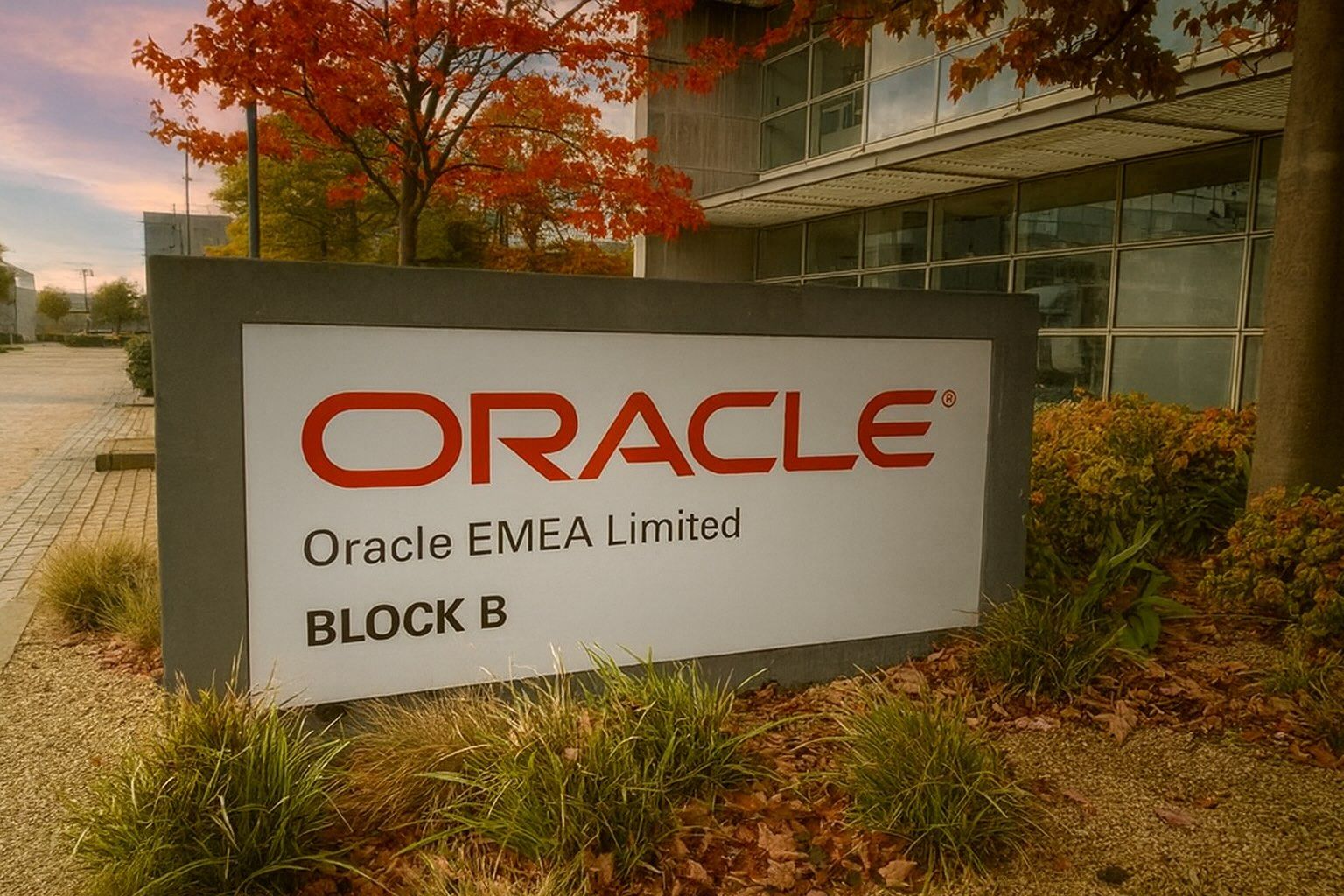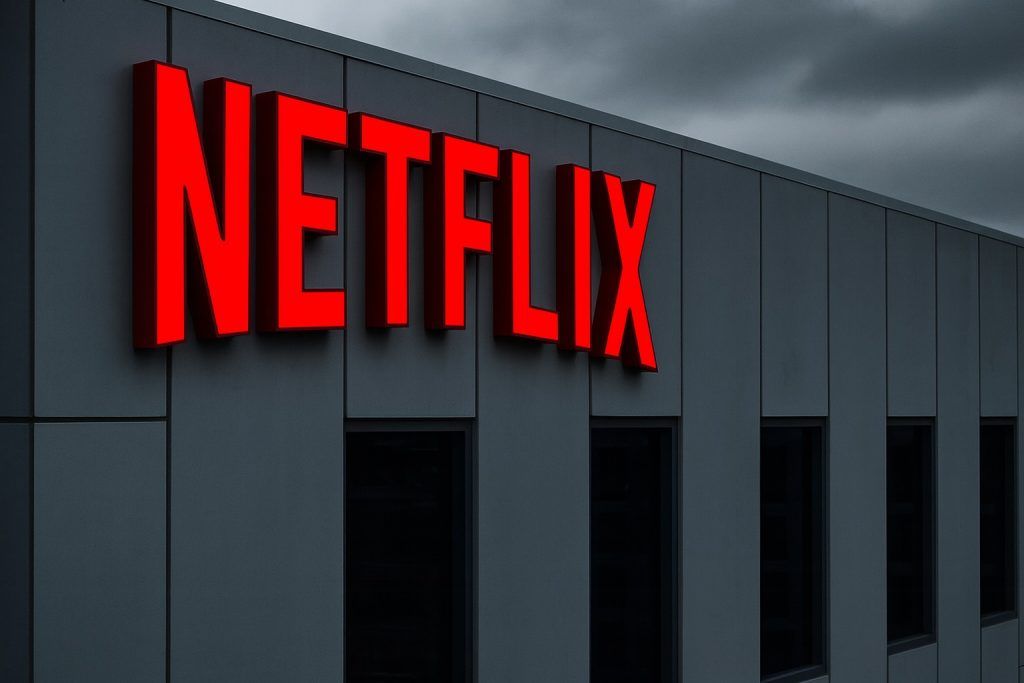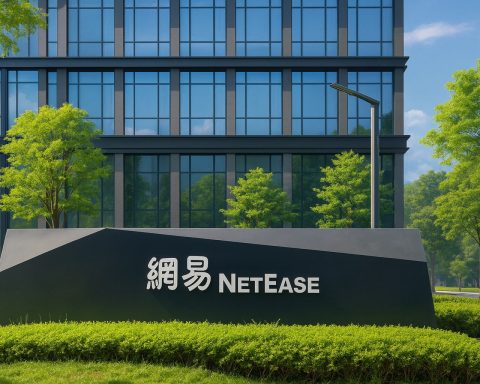Oracle Corporation (NYSE: ORCL) is back in the spotlight today as its share price hovers around $225–226, recovering modestly after a brutal AI-driven sell-off that has wiped out a large chunk of its September gains. Recent headlines highlight a tug of war between huge AI cloud contracts and growing concern over debt and rich valuations, leaving Oracle stock sharply volatile but still central to the AI infrastructure story. [1]
Oracle stock snapshot for November 20, 2025
Real‑time data from several market platforms shows Oracle trading near $225.5 per share, with the prior close in the same area after a roughly 2–3% gain in the latest full session. [2]
Key numbers investors are watching today:
- Latest price: about $225.5 per share
- Day’s recent range (Wed session): roughly $217.31–$228.15 [3]
- 52‑week range:$118.86–$345.72 – Oracle now trades about 35% below its 52‑week high around $345.7. [4]
- Market cap: around $640+ billion [5]
- Valuation: trailing P/E ≈ 52x earnings; price‑to‑sales over 10x by one recent estimate. [6]
After a record run earlier this year on AI optimism, Oracle shares have slumped hard. Different analyses estimate that ORCL is down roughly 18–25% over the last month, and close to 35% off its peak, as investors reassess how much they are willing to pay for Oracle’s AI and cloud future. [7]
Today’s Oracle headlines: bullish calls, AI awards and cautious research
Several fresh stories dated November 20, 2025 (and late November 19) are shaping sentiment around Oracle stock today.
1. Jefferies reaffirms Buy with a $400 price target
A widely‑circulated piece from Jefferies, syndicated via Insider Monkey and Finviz, reiterates a Buy rating on Oracle and affirms a $400 price target. [8]
- Jefferies analyst Brent Thill describes Oracle as one of the top upside opportunities in data centers and AI.
- The note, originally issued on November 16, is getting renewed attention today as it’s republished across financial media. [9]
At a recent price around $225.5, a $400 target implies roughly 75–80% upside if Jefferies’ thesis plays out.
The bullish call leans heavily on Oracle’s role as a key infrastructure provider for AI workloads, including its growing roster of hyperscale cloud and defence‑related customers.
2. Baird trims its target but keeps an “Outperform” rating
On November 18, Baird analyst Rob Oliverlowered his Oracle price target from $365 to $315 while maintaining an “Outperform” rating. [10]
- The cut reflects a cooler view on near‑term upside after the recent slide, but Baird still sees Oracle outperforming its peer group.
- GuruFocus notes that across 35 analysts tracked in that piece, the average target remains around $350, implying sizable upside from current levels. [11]
This blend of lowered targets but still positive ratings captures the mood on Wall Street: Oracle is no longer a unanimously loved “can’t‑miss” AI winner, but many analysts still view the sell‑off as overdone.
3. Trefis warns Oracle looks “relatively expensive” and could fall toward $158
In sharp contrast, a new Trefis article published today asks bluntly: “Oracle Stock To $158?” [12]
Trefis highlights:
- ORCL has fallen about 18% in the past month to around $225.53.
- Their multi‑factor model flags valuation as “Very High”, with:
- Price‑to‑sales ≈ 10.8x vs 3.1x for the S&P 500,
- P/E ≈ 51x vs ≈23x for the index,
- Very expensive on price‑to‑free‑cash‑flow. [13]
- Despite strong growth and profitability (operating margin ~31.6%, net margin ~21%), Trefis labels the stock “Relatively Expensive” and suggests a downside scenario toward $158 is plausible if the market re‑rates the name. [14]
In other words: business good, price arguably too high.
4. MarketBeat: institutional moves and a snapshot of Oracle’s fundamentals
Another article landing today on MarketBeat focuses on institutional holders such as Auxano Advisors LLC, which trimmed its Oracle position by about 19.8% in Q2, leaving around 9,514 shares worth roughly $2.08 million. [15]
More importantly for current stock watchers, the same piece summarizes key metrics:
- Oracle trading up ~2.2%, opening at $225.39 today.
- 12‑month low: $118.86; 12‑month high: $345.72.
- Debt‑to‑equity ratio: about 3.33.
- Consensus rating: “Moderate Buy” with an average target of $322.26. [16]
That consensus target implies roughly 40–45% upside from current levels, but the spread between the highest ($410) and lowest ($130) price targets underscores how divisive the stock has become. [17]
5. WSJ: “Oracle Was an AI Darling. Then Reality Set In.”
A Wall Street Journal feature dated for the November 20 print edition is also circulating widely online. The article notes that: [18]
- Oracle’s stock has given back the gains from a more than 30% AI‑driven surge in September.
- Investors are increasingly anxious about Oracle’s growing debt load and whether its huge AI spending will generate sufficient returns.
This piece crystallizes the new narrative: Oracle is still central to AI, but it may have pulled forward too much optimism, too fast.
6. Oracle wins a major AI award in financial risk technology
In more positive news, Oracle Financial Services has been named the “Overall Winner” in the 2025 Chartis RiskTech AI 50 report for the second year in a row. [19]
Chartis recognized Oracle for:
- Leading in innovation, strategy, and impact in AI for financial services,
- Specific strength in AI‑driven data and document management and computational AI infrastructure for banks and insurers.
While this award focuses on a particular segment of Oracle’s business, it supports the broader thesis that Oracle is not just selling raw compute – it’s also building AI‑driven applications and platforms on top of its cloud.
Under the hood: growth, profitability and a stretched valuation
Despite the recent sell‑off, Oracle is coming off an undeniably strong year:
- Fiscal 2025 revenue: about $57.4 billion, up 8.4% from the prior year.
- Trailing‑twelve‑month revenue: roughly $59.0 billion with net income of $12.4 billion. [20]
- Recent quarterly revenue grew about 12% year over year to ~$15 billion, indicating that cloud and AI workloads are still ramping. [21]
Trefis and other data providers highlight:
- Operating margin: ~31–32%;
- Operating cash‑flow margin: mid‑30s;
- Net margin: ~21%. [22]
In plain English: Oracle is highly profitable, growing faster than the broader market, and throwing off substantial cash – but investors are paying a premium multiple for that privilege.
That premium is exactly what’s being debated now. With a trailing P/E north of 50x and revenue multiples above 10x, the market is pricing Oracle more like a hyper‑growth AI pure‑play than a mature enterprise software titan. [23]
The debt and AI capex overhang
One of the most important stories behind Oracle’s recent volatility is its aggressive spending on AI infrastructure, financed in part by heavy borrowing.
A Reuters report from November 14 notes that: [24]
- Oracle already has around $104 billion in debt outstanding, including roughly $18 billion in bonds.
- The company is reportedly exploring another $38 billion in debt issuance to fund AI data centers and related infrastructure.
- Oracle bonds have sold off, with yields ticking higher as credit investors question the pace and scale of the borrowing.
At the equity level, MarketBeat’s snapshot shows a debt‑to‑equity ratio of about 3.33, confirming that this is a heavily levered balance sheet by large‑cap tech standards. [25]
Credit strategists quoted by Reuters frame this as a “bump in the road” rather than an existential crisis, but they underline the key question: Oracle must generate very high returns quickly from its AI investments to justify the cost and depreciation schedule of these vast data center projects. [26]
Why AI still matters so much for Oracle stock
Even as sentiment cools, Oracle’s AI and cloud pipeline remains enormous.
Recent and ongoing developments include:
- A historic compute contract with OpenAI:
- Reuters reports that OpenAI has signed a deal to buy about $300 billion of computing power from Oracle over roughly five years, starting in 2027—one of the largest cloud contracts ever. [27]
- Coverage from FT and others ties this to OpenAI’s “Stargate” project, a planned multi‑hundred‑billion‑dollar AI data‑center build‑out in which Oracle is a core partner. [28]
- A $30 billion‑per‑year cloud services agreement, expected to begin contributing in fiscal 2028, which could represent a quarter to a third of Oracle’s revenue by that time. [29]
- Talks with Meta Platforms over a multi‑year AI cloud computing deal worth about $20 billion, which would further diversify Oracle’s AI customer base beyond OpenAI alone. [30]
- Oracle says it has recently secured about $65 billion in cloud infrastructure deals across seven contracts from four customers in just 30 days, underscoring the demand for its AI‑ready data centers. [31]
- Strategic investments to support that demand, such as a $3 billion plan to expand cloud and AI infrastructure in Germany and the Netherlands, and a separate $5 billion commitment to the UK, are designed to position Oracle as a key sovereign cloud provider for governments and defence clients. [32]
Oracle itself now projects that cloud infrastructure revenue could reach about $166 billion in fiscal 2030, which would make up nearly 75% of total company revenue if targets are met. [33]
All of this explains why, even after a painful pullback, most analysts still rate ORCL a Buy or Moderate Buy and why bullish reports like Jefferies’ $400 target have not disappeared. [34]
Defence and regulated‑sector wins add to the long‑term story
Beyond headline mega‑deals, Oracle has been steadily deepening its presence in sensitive, high‑margin verticals such as defence and financial services:
- Defence AI partnership: Earlier this month, Oracle and Defence Technologies (linked to Defence Holdings PLC) announced a collaboration to provide sovereign AI‑enabled software products for global defence and national security customers, deploying across Oracle Cloud Infrastructure and its distributed “cloud‑at‑customer” offerings. [35]
- UK government and NATO cloud expansion: Oracle has also rolled out new AI innovations through its UK Sovereign Cloud, tied to a $5 billion UK investment plan, targeting secure workloads for government and defence organizations including NATO. [36]
- RiskTech AI 50 leadership: As noted above, Oracle Financial Services’ win in the Chartis RiskTech AI 50 2025 highlights its strength in AI‑driven risk, data and document management for global financial institutions—segments where switching costs and regulatory complexity can make contracts long‑lasting and sticky. [37]
These deals don’t move the needle like a $300 billion OpenAI contract, but they support the narrative that Oracle is embedding itself in mission‑critical, regulated AI workloads—a key bull argument for paying a premium.
How the market is likely interpreting Oracle today
Putting the day’s news flow together, Oracle’s investment case on November 20, 2025 looks like a classic high‑reward, high‑risk AI infrastructure play:
What the bulls see
- Explosive long‑term AI demand backed by signed and reported contracts (OpenAI, potential Meta deal, $30B/year cloud agreement). [38]
- Strong growth and margins relative to the broader market, with double‑digit revenue growth and operating margins above 30%. [39]
- Validation in critical verticals (defence, finance, healthcare) via partnerships and awards. [40]
- Analyst consensus still skewed toward Buy / Moderate Buy, with average price targets far above today’s levels. [41]
What the bears worry about
- Rich valuation metrics that assume years of near‑flawless execution on AI deals. [42]
- Heavy and rising debt, with reports of another $38 billion potentially coming, and bond investors already pushing yields higher. [43]
- Exposure to a potential AI bubble: if AI capex slows or large customers scale back, Oracle’s massive build‑out could end up over‑capacity. [44]
- Critical commentary from outlets like the Wall Street Journal and CNBC, which argue that AI sentiment around Oracle has cooled and that its large debt‑financed buildout is making some investors uneasy. [45]
Today’s modest gain in the stock price suggests that, for now, buyers are willing to step in around the mid‑$220s, but the debate is far from settled.
Key dates and catalysts Oracle investors should watch
Looking beyond today’s headlines, several events will likely drive the next leg of Oracle’s move:
- Next earnings report – December 8, 2025:
Oracle is scheduled to report results in early December. Investors will focus on:- Growth in Oracle Cloud Infrastructure (OCI) and AI‑related revenue,
- Updates on remaining performance obligations (RPO) tied to mega‑deals,
- Capex and debt plans for 2026 and beyond. [46]
- Funding and bond market developments:
Any confirmation of the rumored $38 billion in new debt, pricing of new bond offerings, or shifts in Oracle’s credit spreads are likely to affect both equity and debt investors. [47] - Regulatory and political scrutiny of AI infrastructure:
Massive multi‑hundred‑billion‑dollar projects like Stargate, and concentration of compute power among a few hyperscalers, could invite regulatory attention that reshapes economics over time. [48] - Progress on Meta and other hyperscaler deals:
If Oracle formally announces a finalized Meta cloud agreement or similar high‑profile wins, it could restore some of the AI‑driven premium to the share price. [49]
Bottom line: Oracle stock on November 20, 2025
For today, Oracle stock sits at the intersection of huge AI promise and equally huge execution and balance‑sheet risk:
- The company is deeply embedded in the AI infrastructure build‑out, with unprecedented contracts and long‑term guidance that, if realized, could make its current valuation look justified—or even cheap. [50]
- At the same time, debt, capex, and lofty multiples give bears plenty to work with, and even relatively neutral voices like Trefis warn that valuation leaves little room for error. [51]
As of November 20, 2025, Oracle is not a sleepy, mature software giant—it’s a high‑beta AI infrastructure heavyweight where headlines about contracts, credit markets, and AI demand can move the stock dramatically in either direction.
Anyone considering ORCL today should treat it as a high‑risk, high‑reward AI play, and—as always—do their own research or consult a qualified financial adviser before making investment decisions.
References
1. stockanalysis.com, 2. stockanalysis.com, 3. stockanalysis.com, 4. www.marketbeat.com, 5. stockanalysis.com, 6. stockanalysis.com, 7. www.trefis.com, 8. finviz.com, 9. finviz.com, 10. www.gurufocus.com, 11. www.gurufocus.com, 12. www.trefis.com, 13. www.trefis.com, 14. www.trefis.com, 15. www.marketbeat.com, 16. www.marketbeat.com, 17. www.marketbeat.com, 18. www.wsj.com, 19. www.oracle.com, 20. stockanalysis.com, 21. www.marketbeat.com, 22. www.trefis.com, 23. www.trefis.com, 24. www.reuters.com, 25. www.marketbeat.com, 26. www.reuters.com, 27. www.reuters.com, 28. www.ft.com, 29. www.networkworld.com, 30. www.reuters.com, 31. www.techbuzz.ai, 32. www.reuters.com, 33. www.reuters.com, 34. www.marketbeat.com, 35. au.investing.com, 36. www.oracle.com, 37. www.oracle.com, 38. www.reuters.com, 39. www.trefis.com, 40. www.research-tree.com, 41. www.marketbeat.com, 42. www.trefis.com, 43. www.reuters.com, 44. stockanalysis.com, 45. www.wsj.com, 46. stockanalysis.com, 47. www.reuters.com, 48. openai.com, 49. www.reuters.com, 50. www.reuters.com, 51. www.trefis.com








